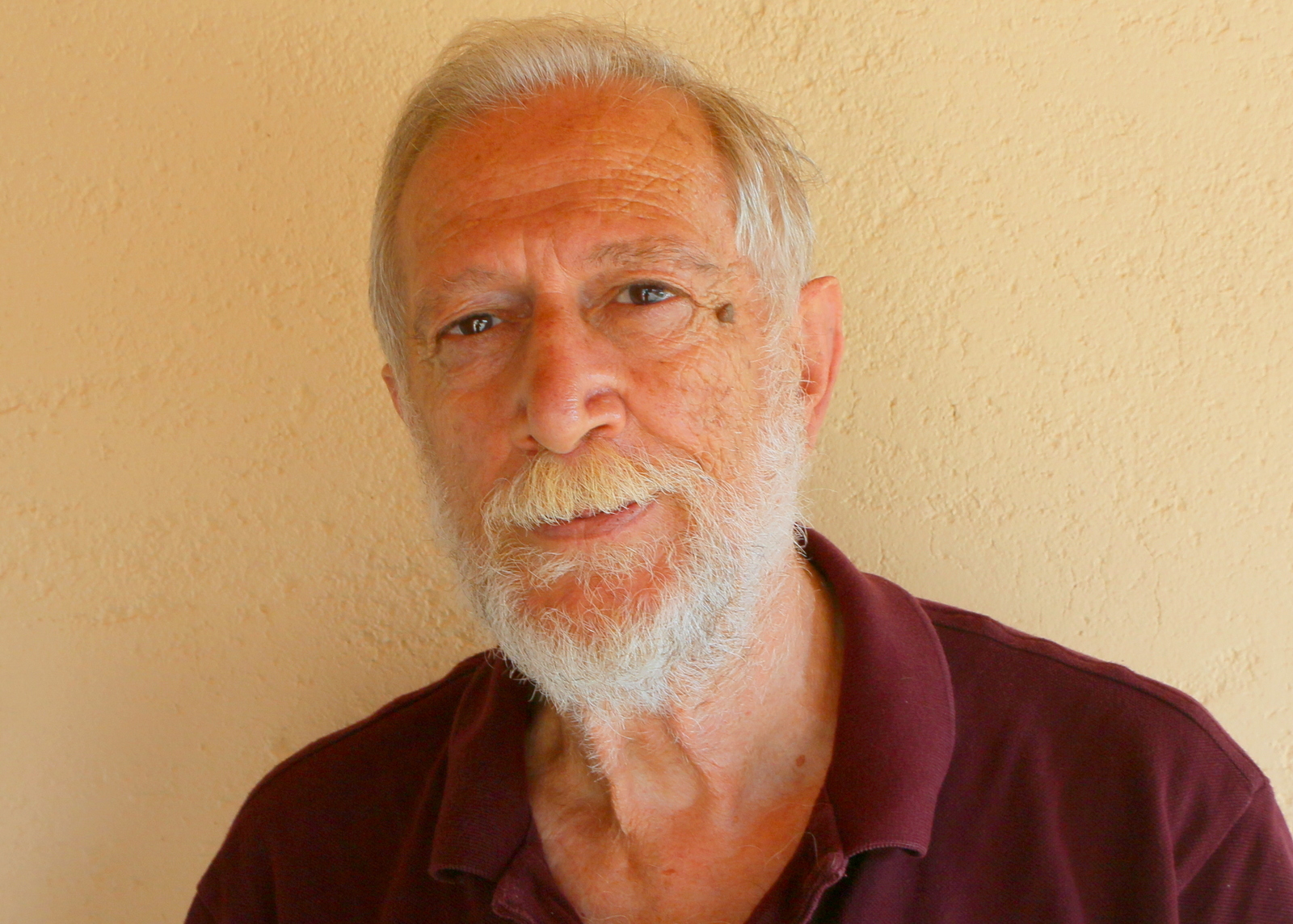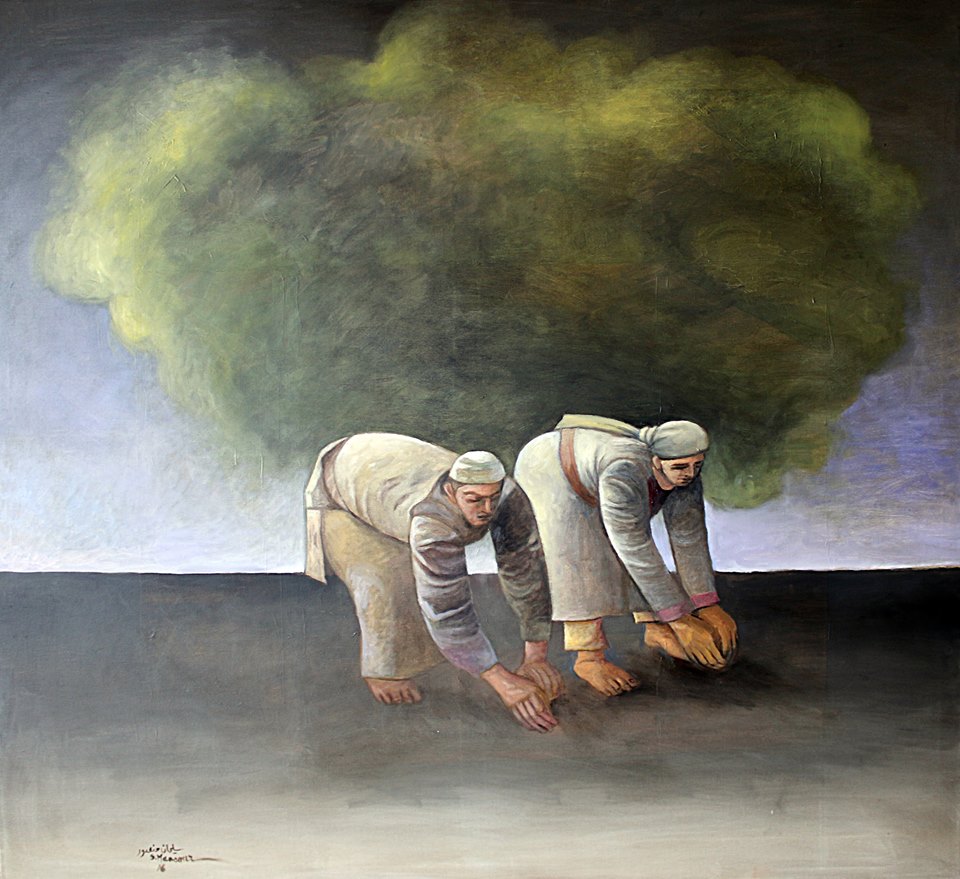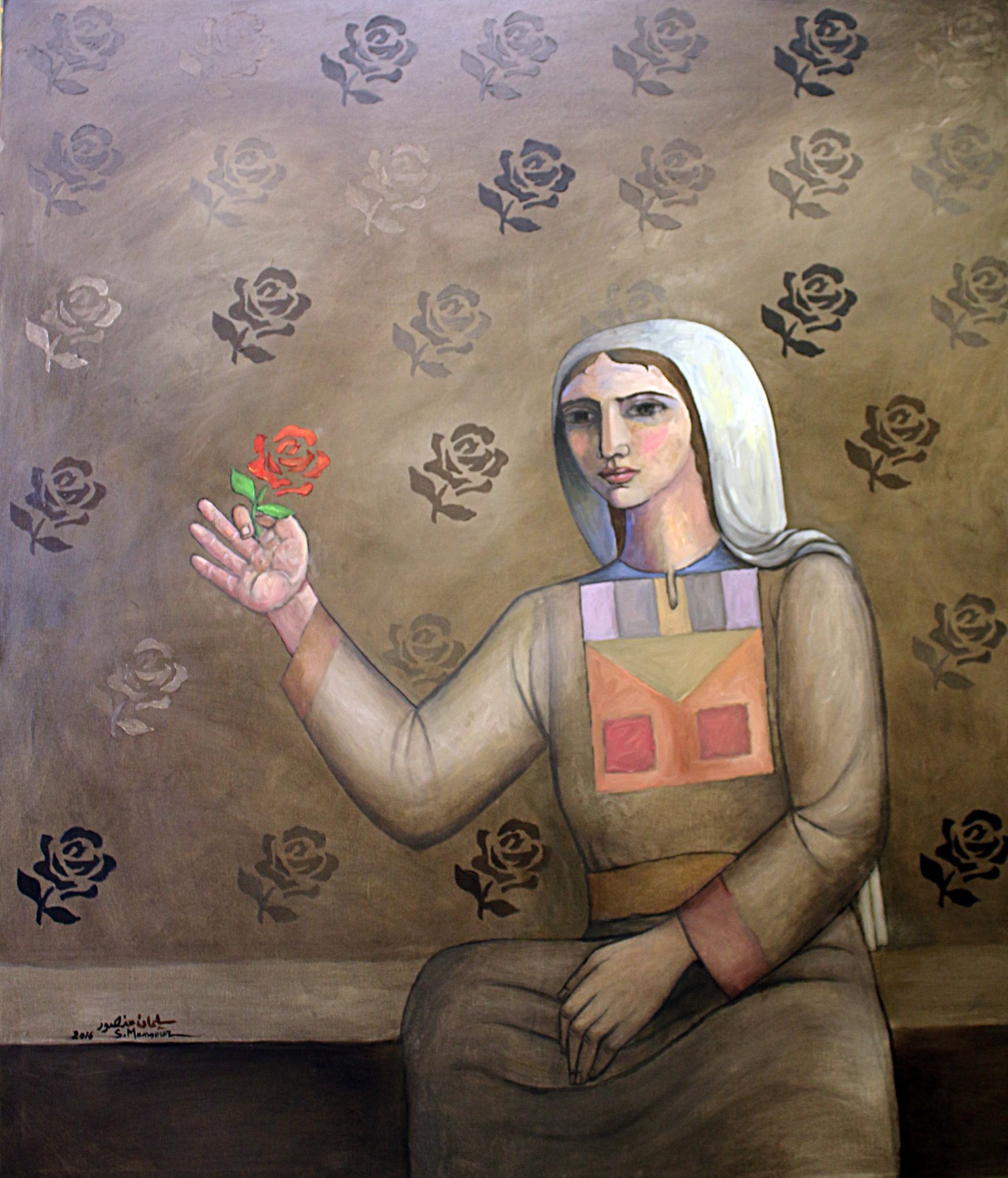
Sliman Mansour is one of the most distinguished Palestinian artists working today. Throughout his forty-year career, Mansour has established himself as an internationally recognized artist dedicated to giving visual expression to Palestinian identity.
Born in 1947 in Birzeit, a Palestinian town north of Ramallah, Mansour studied fine arts at Bezalel Art Academy in Jerusalem. Since the seventies, he has contributed to the development of an iconography of the Palestinian struggle through his works on paper. Uniting Mansour’s body of work is the depiction of the orange tree (considered to symbolize the 1948 Nakba), the olive tree (considered to symbolize the 1967 war), traditional Palestinian embroidery, village life, and the figure of the Palestinian woman as the mother figure figure of Palestine, giving birth to and protecting the Palestinian people. One of Mansour’s most recognized works is the 1974 painting, Camel of Hardship. In this image, the figure of the porter bends under the weight of his satchel, which is significantly shaped like an eye and holds the city of Jerusalem as identified by the Dome of the Rock. Personifying Palestine through the figure of an old, weary, and isolated man, Mansour captures the concept of sumud, or steadfastness, and the continuing endurance of the struggle despite hardship. Before its international acclaim, the piece resonated locally as it was printed as posters in 1975 and displayed in homes and public venues throughout the West Bank and Gaza.
In 1987, together with artists Vera Tamari, Tayseer Barakat, and Nabil Anani, Mansour founded New Visions, a collective formed in response to the first intifada (1987 – 1993). While fostering a revolutionary approach to aesthetics in Palestinian art, the artists also participated in the intifada by boycotting art supplies imported from Israel. Working instead with natural materials such as coffee, henna, and clay, the artists tied the process of art making to both the land and the struggle. This body of work documents an important moment in the history of Palestinian art. Although the artists adopted a nationalist agenda similar to other artists working in the social realist style, the distinction lies in an abstracted composition. Art no longer merely represented the political, but instead artistic production itself constituted a political act.
Since then, Mansour has become acclaimed for a unique body of work that uses mud as a medium. Layering and molding mud into figural compositions on a wooden framework, Mansour deploys the actual land to depict Palestine, its history, and people. Working in a variety of sizes—some pieces are life-size—the artist creates what critics have termed “emblems of decay,” as the cracks and distortions of the drying process suggest the passage of time and the impermanence of materiality. In one of his most important series from 1996 entitled, I am Ismail, the artist molds a relief of the biblical figure into what appears as an ancient tombstone. Commemorating Ismail’s story of exile and his relation to the land, Mansour suggests through the title his own autobiographical connection to the story of Ismail. The series documents the artist’s continued dedication to a set of aesthetic concerns intimately related to the visualization of the Palestinian struggle in all its hardships and aspirations.
Mansour has contributed extensively to the development of an infrastructure for the fine arts in the West Bank. He was the head of the League of Palestinian Artists from 1986 to 1990. In 1994, Mansour co-founded al-Wasiti Art Center in East Jerusalem and served as Director from 1995 to 1996. He is a member of the Founding Board of Directors of the International Academy of Art Palestine, established in 2004 in Ramallah. He has taught at numerous cultural institutions and universities throughout the West Bank, including Al-Quds University. Also a professional cartoonist, Mansour published from 1981 to 1993 in Al-Fajr English Weekly, a Palestinian English weekly formerly published in Jerusalem. He is the co-author of the 1998 publication, Both Sides of Peace: Israeli and Palestinian Political Poster Art.
Mansour has exhibited in group and solo exhibitions throughout the Arab world, United States, Europe, and Asia. Notably, he participated in the 1997 French Palestinian spring exhibition at the Institut du Monde Arabe in Paris. In 1989, he received the “Nile Award,” at the 1998 Cairo Biennial for the series, I am Ismail and the Palestinian Prize for Visual Arts.



